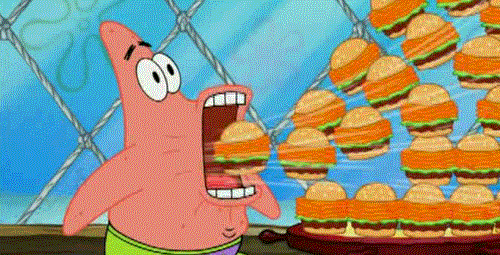Type System Game Engines
October 05, 2020 💾 Download the slides here!
 Here's a cute photo of a cat to start the blog post off
right.
Here's a cute photo of a cat to start the blog post off
right.
Preamble
This is the companion blog post for my TSConf 2020 talk. At the end of it, we’ll have figured out how to take a template string literal like this one, simulate a Tic Tac Toe game on it, and figure out who the winner of that game is.
type Winner = TicTacToe<`
X 1 1
O 2 2
X 2 0
O 0 2
X 1 0
O 0 0
X 1 2
`>;Just looking for the end result? Skip down to the final product.
While our surface agenda might be to implement silly type system games, our purpose is to gain a better understanding of how the TypeScript type system works, how to use it to improve our development practices, and what to do with all this newfound information.
The attached slides also include an introduction to type systems and a real-world example for each concept introduced before expanding the type system game engine using that concept. I’ve left those out of this blog post to keep it trim.

Buckle down, folks, and hold your pinkies up. We're going to explore some fancy types. [source]
Conditional Generics
👉 TypeScript docs: Conditional TypesOur first type system exploration will be ‘conditional generics’, which are a technique for generating types based on the properties of other types. Conditional types take in other types and spit out new types based on the original one.
Take a look at this type:
type RockMatchup<Opponent> = Opponent extends "Rock"
? "Draw"
: Opponent extends "Paper"
? "Loss"
: "Win";That’s a description of how a player’s Rock choice in a game of Tic Tac Toe works against its possible opponents.
If the opponent is a
'Rock':
type Result = RockMatchup<"Rock">;
// 'Draw'
…then the result is a
'Draw'. If the opponent is
'Paper', the player’s Rock
loses; if the opponent is anything else (so,
'Scissors'), the player’s
Rock wins.
Fun fact: types may receive more than one generic. In this next snippet, we define the matchups for two players, with a bunch of nested checks for each of the nine possible results.
type RockPaperScissors<Player, Opponent> =
// Player is Rock
Player extends "Rock"
? Opponent extends "Rock"
? "Draw"
: Opponent extends "Paper"
? "Loss"
: "Win"
: // Player is Paper
Player extends "Paper"
? Opponent extends "Rock"
? "Win"
: Opponent extends "Paper"
? "Draw"
: "Loss"
: // Player is Scissors
Opponent extends "Rock"
? "Loss"
: Opponent extends "Paper"
? "Win"
: "Draw";Amusing.
Type Members
👉 TypeScript docs: Index TypesNow that we’ve established how to add logic to the type system, let’s expand another dimension of type system logic by looking at nested types within types.
The keyof operator in the
type system takes in a type we need the keys of and spits back
a union of just those keys. When a type is known to be a key
of another type, you can use it to retrieve the corresponding
member under that key.
We can use keyof to declare
our Tic Tac Toe matchups as a big type system object and index
into it to find the matchups for our player and opponent:
type Matchups = {
Rock: {
Paper: "Loss";
Scissors: "Win";
};
Paper: {
Rock: "Win";
Scissors: "Loss";
};
Scissors: {
Rocker: "Loss";
Paper: "Win";
};
};
type RockPaperScissors<
Player extends keyof Matchups,
Opponent extends keyof Matchups
> = Opponent extends keyof Matchups[Player]
? Matchups[Player][Opponent]
: "Draw";
That new and enhanced
RockPaperScissors type
takes in a Player and an
Opponent, both of which
must be one of the keys of
Matchups: i.e.
'Rock',
'Paper', or
'Scissors'.
-
If the
Opponenttype is one of the members of theMatchup’s listing under the Player, we go with that value. -
Otherwise, we assume it’s a
'Draw'.
type Result = RockPaperScissors<"Paper", "Scissors">; // 'Loss'
The extends keyword in
RockPaperScissors is
important: it tells the type system that the generic type
parameter must be that particular type, or a more specific
version of it.

We're winding up to play with the type system! [source]
Tuple Types
👉 TypeScript docs: Tuple TypesWe’ve explored logical types and members thereof. Now let’s dig into arrays of types, also known as tuples. We’ll be able to use these to declare full-on game boards: not just single-use logical comparisons.
First, let’s declare a couple of types:
type Cell = " " | "X" | "O";
type TicTacToeBoard = [
[Cell, Cell, Cell],
[Cell, Cell, Cell],
[Cell, Cell, Cell]
];-
Cellis the content of any slot on our game board: either the empty string (not yet placed), an'X', or an ’O'. -
TicTacToeBoardis a tuple of tuples, representing a grid of spots on a 3x3 board.
In other words, we now have a 3x3 board of cells! 🚀
Victory Conditions
Using Cell and
TicTacToeBoard as bases, we
can create a conditional
Victory type in the type
system that takes in a board and returns a new type
representing whether that board any of the three possible
victory conditions for that board: three-in-a-row diagonally,
horizontally, or vertically.
type Victory<Player, Board> = Board extends WinningBoard<Player> ? true : false;
type WinningBoard<Player> =
| DiagonalVictory<Player>
| HorizontalVictory<Player>
| VerticalVictory<Player>;The diagonal win condition for a player is hit when either of the diagonal lines on the board can only be that player’s pieces. The Cell spots can be filled with anything, but the Player spots must be filled with only the player’s pieces.
type DiagonalVictory<Player> =
| [[Player, any, any], [any, Player, any], [any, any, Player]]
| [[any, any, Player], [any, Player, any], [Player, any, any]];Similarly, the horizontal victory check is satisfied only when one of the three rows in the board are known to contain only the player’s pieces.
type HorizontalVictory<Player> =
| [[Player, Player, Player], [any, any, any], [any, any, any]]
| [[any, any, any], [Player, Player, Player], [any, any, any]]
| [[any, any, any], [any, any, any], [Player, Player, Player]];Same with the vertical victory check and the board’s columns.
type VerticalVictory<Player> =
| [[Player, any, any], [Player, any, any], [Player, any, any]]
| [[any, Player, any], [any, Player, any], [any, Player, any]]
| [[any, any, Player], [any, any, Player], [any, any, Player]];Making use of the WinningBoard type, we can see that a WinAtStart check for a board comprised entirely of blanks is false. None of the 8 win conditions are satisfied by that board.
type StartingBoard = [[" ", " ", " "], [" ", " ", " "], [" ", " ", " "]];
type WinAtStart = Victory<"X", StartingBoard>;
// falseIf we add a few pieces and include a diagonal victory for the checked piece, however, our result becomes true. Success!
type HowAboutNow = Victory<
"O",
[["O", " ", "X"], ["X", "O", " "], [" ", "X", "O"]]
>;
// trueTaking our conditionals one step higher, we can check which player –if either– wins by seeing whether the board satisfies the victory condition for either of our known players.
type Winner<Board> = Victory<"X", Board> extends true
? "X"
: Victory<"O", Board> extends true
? "O"
: " ";
type StartingWinner = Winner<StartingBoard>;
// ' '
type WinnerNow = Winner<[["O", " ", "X"], ["X", "O", " "], [" ", "X", "O"]]>;
// 'O'Nifty.

Many of a thing is always better than one of it. [source]
Mapped Types
👉 TypeScript docs: Mapped TypesIn this section, we’ll introduce ways to transform all members of types in our type decision making, which will open the doors to much more grandiose dynamic type system type generation.
Mapped types take in a list of keys, such as from a keyof operator, and create new type members based on them.
For example, we can use mapped types to declare a Tic Tac Toe board in a bit more dynamic of a manner:
type TicTacToeBoard = {
[Row in 0 | 1 | 2]: {
[Column in 0 | 1 | 2]: Cell;
};
};Under this description, any object that has arrays under 0, 1, and 2 which themselves contain Cells under 0, 1, and 2 match the board. That’ll come in handy later when we set up mapped types so weird that TypeScript forgets the result was supposed to be an array.
In fact, this particular type is no longer describing an array, so checking for victory types above will need to switch to object descriptions (since declaring tuple types indicates the type must be an array):
// Like this, but for all the board descriptions...
{
0: { 0: Player, 1: any, 2: any },
1: { 0: any, 1: Player, 2: any },
2: { 0: any, 1: any, 2: Player },
}Board Transitions
Now that we know how to map all members of a type into a new type, we should be able to apply that technique to placing pieces on a Tic Tac Toe board. Given our starting board from before and a desire to place ‘X’ at row 0 / column 1, we should be able to use conditional mapped types to take in our board tuples and output a modified board.
type FirstMove = ["X", 0, 1];
type AfterFirstMove = [[" ", "X", " "], [" ", " ", " "], [" ", " ", " "]];This is how we can accomplish such a move in the type system:
type ReplaceInBoard<
Board extends TicTacToeBoard,
Replacement extends Cell,
RowPlace extends 0 | 1 | 2,
ColumnPlace extends 0 | 1 | 2
> = {
[Row in 0 | 1 | 2]: {
[Column in 0 | 1 | 2]: [Row, Column] extends [RowPlace, ColumnPlace]
? Replacement
: Board[Row][Column];
};
};
ReplaceInBoard takes in
four type inputs:
-
Board: original board to work on -
Replacement: new piece on the board -
RowPlace: row index to place at -
ColumnPlace: column index to place at
It output a new object type where, for each member under rows 0-2 and columns 0-2, checking whether that’s the same row and column to replace at:
- If yes: use the new piece
- If no: use the original board’s piece
I’ll also note here that although our ReplaceInBoard type works, it’s pushing the boundaries of what the type system is really intended for, so it loses just a little bit of clarity. TypeScript sees the resultant type as an object with number keys.
type AfterFirstMoveMap = ReplaceInBoard<StartingBoard, "X", 0, 1>;
// {
// 0: { 0: " "; 1: "X"; 2: " "; };
// 1: { 0: " "; 1: " "; 2: " "; };
// 2: { 0: " "; 1: " "; 2: " "; };
// }Still, the result is what we want: a new board based on the original with the move applied!

We're leveling up! We can play games with ourselves now in the type system! [source]
Inferred Types
👉 TypeScript docs: Type Inference in Conditional TypesWhat I’d like to do now is take a starting board and an array of moves, then generate how the board should look after all of them have been applied. This’ll let us simulate a full-on game of Tic Tac Toe based on the move inputs.
This is difficult because there’s no ‘for loop’ operator in the type system. We can’t set up a type and imperatively modify it the way we would in, say, JavaScript.
type AllMoves = [["X", 0, 1], ["O", 2, 2]];
type AfterAllMoves = [[" ", "X", " "], [" ", " ", " "], [" ", " ", "O"]];TypeScript’s type system is closer to a functional language (or even a logical) one, which is to say nothing can be modified after creation, and all inferences must be made based on already defined truths.
Thinking Functionally
If we were working in runtime code, we’d tackle this functional problem recursively.
type Move = [Cell, 0 | 1 | 2, 0 | 1 | 2];
// There are two possibilities when calling our applyMoves function:
function applyMoves(board: TicTacToeBoard, moves: Move[]) {
// 1. If the remaining moves are empty, we can return the board as-is
if (moves.length === 0) {
return board;
}
// 2. If there's at least one move to apply, we apply it,
// then recurse on the new board with the remaining moves
const nextBoard = replaceInBoard(board, moves[0]);
const remainingMoves = moves.slice(1);
return applyMoves(nextBoard, remainingMoves);
}Typing Functionally
Our code in the type system looks a little different but amounts to the same result.
type Move = [Cell, 0 | 1 | 2, 0 | 1 | 2];
type ApplyMoves<
Board extends TicTacToeBoard,
Moves extends Move[]
> = Moves extends []
? Board
: ApplyMoves<
ReplaceInBoard<Board, Moves[0][0], Moves[0][1], Moves[0][2]>,
DropFirst<Moves>
>;- First, if the moves extends the empty array (so, if there are no more moves), the resultant type is the board itself.
-
Otherwise, we return a resultant type from
ApplyMoves. That recursive type system call toApplyMovestakes in the result of applying our first move to the board for a board, and all but the first move from our moves as its array of moves.
The remaining moves are calculated using a
DropFirst type that shows
off why we just learned about inferred types.
type DropFirst<T extends unknown[]> = T extends [any, ...infer U] ? U : [];
DropFirst takes in a T that
must be an array, then checks if it’s possible for a remaining
array (using the ..., or
spread, operator) to be inferred from all but the first list
member. If that array is possible, it’s the resultant type. If
not, an empty array is returned.
If we run our ApplyMoves type on our blank StartingBoard and an array type containing a couple of moves, we get back an output type with those two moves applied.
type TwoAppliedMoves = ApplyMoves<StartingBoard, [["X", 0, 1], ["O", 2, 2]]>;
/*
{
0: { 0: " "; 1: "X"; 2: " "; };
1: { 0: " "; 1: " "; 2: " "; };
2: { 0: " "; 1: " "; 2: "O"; };
}
*/Amazing! Yes! Hooray! 🙌 By harnessing the power of inferred types and joining them with recursive type definitions, we’re able to apply a list of moves stored in the type system to a board. Our output board is the result of all those moves applied on top of each other.
By the way, directly recursive types like this are only available in TypeScript versions 4.1 and later. Get excited for new TypeScript versions!

Recursion! In the type system! [source]
Template Literal Types
The last major type system feature we’ll look at is also a new one, and is in my opinion one of the stranger –though still very useful– additions to TypeScript. It’s also only available on versions 4.1 later.
Template literal types allow us to check for and extract substrings from inferred string types in the type system. I’d like to use them to take a starting board and an array of moves, then generate how the board should look after all of them have been applied. This’ll let us simulate a full-on game of Tic Tac Toe based on the move inputs.
type GameResult = TicTacToe<`
X 1 1
O 2 2
X 2 0
O 0 2
X 1 0
O 0 0
X 1 2
`>;Level One: Base Algorithm
Keeping the type system’s functional/logical nature in mind,
here’s my proposal for how we’re going to tackle this
TicTacToe type.
- First, we’ll convert the raw moves description string into a list of move descriptions using a combination of the string template literal types we just saw and the recursive array building technique from applying move tuples.
-
Next, we’ll take the
ApplyMovestype we already wrote out and pass the list of moves to it, to generate an end state board. -
Finally, we’ll pass that end-state board to our
already-written
Winnertype to get out the result of who wins.
Here’s how that type will look:
type TicTacToe<Moves extends string> = Winner<
ApplyMoves<StartingBoard, ParseRawMoves<Moves>>
>;
We’ll need to write that
ParseRawMoves type.
Level Two: String Parsing
In order to convert the raw moves list into an array of
Moves, we’ll need to use
steps like the following:
-
Split the steps into an array on
\nendlines -
Filter those move lines into an array of usable
Movetuples
type ParseRawMoves<Moves extends string> = CollectParsedRawMoves<
Split<Moves, "\n">,
[],
"X"
>;That introduces two types we’ll need to implement.
Level Three: String Splitting
Finally, we get a real example in this blog post of using template literal types:
type Split<Text extends string, Splitter extends string> = Text extends ""
? []
: Text extends `${infer Prefix}${Splitter}${infer Suffix}`
? [Prefix, ...Split<Suffix, Splitter>]
: [Text];
Our Split type takes in a
Text string and a
Splitter string. If the
text is empty, then we’re done, it gives back an empty array.
Otherwise, it checks for an instance of the
Splitter string inside the
Text, allowing any inferred
Prefix string to come
before it and any inferred
Suffix string to come after
it.
Such is the nature of type system template literals: we can check for adherence to string literal types and extract (infer) types as we need.
If there is that inferred matching, the result is first
whatever’s before the
Splitter string (Prefix), followed by a recursive call to split whatever’s after the
Splitter (Suffix).
If the Splitter wasn’t
found, then this string can no longer be split: we return an
array containing the all of the Text.
Level Four: Filtering
Now that we can split the string on endlines, we’ve got one last challenge ahead of us: turning these lines into raw move descriptions.
The full
CollectParsedRawMoves type
is a little hairy so I’ve split out a few pieces of logic into
helpers shown here:
// Given a turn, switch to the next (other possible) turn
type NextTurn<Turn> = Turn extends "X" ? "O" : "X";// Given a string description of a move, give back the number (int) equivalent
// (useful because the inputs are raw strings, but outputs are numbers...)
type IntToString<Int> = Int extends "0"
? 0
: Int extends "1"
? 1
: Int extends "2"
? 2
: never;// Applies the two above types to parse an input line like 'X 1 2'
type ParseRawMove<Turn, RawRow, RawColumn> = [
Turn,
IntToString<RawRow>,
IntToString<RawColumn>
];
Ok dokie! Here it is!
CollectParsedRawMoves! A
type that recursively goes through an array of raw move
strings and turns them into our nice Move tuple types:
type CollectParsedRawMoves<
RawMoves extends string[],
Collected extends Move[],
Turn extends "X" | "O"
> = RawMoves extends []
? Collected
: RawMoves[0] extends `${infer Pre}${Turn} ${infer RawRow} ${infer RawColumn}${infer Post}`
? CollectParsedRawMoves<
DropFirst<RawMoves>,
[...Collected, ParseRawMove<Turn, RawRow, RawColumn>],
NextTurn<Turn>
>
: CollectParsedRawMoves<DropFirst<RawMoves>, Collected, Turn>;It’s kind of big, so here’s a version with inline comments:
// Our CollectParsedRawMoves type takes in:
type CollectParsedRawMoves<
// * the array of raw moves,
RawMoves extends string[],
// * the collected moves thus far,
Collected extends Move[],
// * and a current turn to parse out of the next raw move.
Turn extends "X" | "O"
> =
// If there are no more raw moves to parse out, it's done, hooray!...
RawMoves extends []
? // ...we can exit early by returning an empty array.
Collected
: // If there is a next move to parse in our list of raw moves,
// it checks whether that move matches a usable pattern.
// There can be any amount of Pre text before the Turn string,
// followed by a space, the row, another space, the column,
// then any amount of Post text.
RawMoves[0] extends `${infer Pre}${Turn} ${infer RawRow} ${infer RawColumn}${infer Post}`
? // If it did match, we can recursively continue with:
CollectParsedRawMoves<
// * remaining moves yet to be parsed,
DropFirst<RawMoves>,
// * the previous collected moves, followed by this new move
// (as parsed by our ParseRawMove helper),
[...Collected, ParseRawMove<Turn, RawRow, RawColumn>],
// * and the next turn.
NextTurn<Turn>
>
: // If our raw move doesn't match the template, then we recurse:
CollectParsedRawMoves<
// * still with the rest of the raw moves, but
DropFirst<RawMoves>,
// * the same collected moves list (no added one), and
Collected,
// * we retry the same move again.
Turn
>;…tada! 🎊
The Final Product
View the full code solution on the TypeScript Playground.
There’s a good bit of code! If you’re feeling lost in the sea of new complex type syntax, that’s great! Take some time off, come back to this blog or the slides, and persevere – you’ll be able to get through it, and you’ll have a more clear understanding of it all if you do.
All concepts are new until you’ve had the time to play with them for a bit. Everything is complex until you get it.

Patrick Star trying to grasp template literal types. [source]
What’s Next
By now, you have at the very least a healthy appreciation for the power of TypeScript’s type system, and ideally a better understanding of how to use it to boot.
If you want to grow your type system chops a bit, the Type Challenges repository is a great place to up your game. It presents a series of increasingly difficult tasks in the type system for you to play with.
DefinitelyTyped
Lastly, I’d like to give a friendly plug for DefinitelyTyped: the open source repository storing TypeScript type definitions for packages that don’t ship with their own.
It’s a huge repository with thousands of open issues, ready for you to tackle. If you use any JavaScript libraries that aren’t (yet?) written in TypeScript, applying the fun concepts you saw here today to flesh them out is a wonderful way to spend your time.
 This post's release month is even
Hacktoberfest, a promotion wherein you get a free shirt for sending pull
requests on GitHub. It's perfect! 💯
This post's release month is even
Hacktoberfest, a promotion wherein you get a free shirt for sending pull
requests on GitHub. It's perfect! 💯
Closing Thoughts
I’d love to see what fun advances in this game engine exploration you come up with. Please, tag me @JoshuaKGoldberg with your results! A few starting suggestions might be:
- A win/loss calculator for a list of game strings?
- Game AI to generate a next move?
- Expanding to games like Connect Four, Checkers, Chess, or Boggle?
- Ignoring whatever I say and doing something completely different!?
Thanks for making it this far in the blog post. I hope it served some use to you in exploring the TypeScript type system! 💖